Solar time refers to the measurement of the position of the Sun in relation to its culmination point, which is expressed in fractions of true solar days (including hours, minutes, and seconds). In order to calculate true solar time, one must consider the hour angle of the Sun’s center and add 12 hours to it. Unfortunately, the length of true solar days can vary throughout the year due to two main factors. Firstly, the Sun does not move along the celestial equator, but rather along the ecliptic, which is inclined to it. As a result, the change in the Sun’s direct ascent in one day near the solstices is greater compared to near the equinoxes. This leads to slightly different time intervals between the lower culminations of the Sun during the solstices and equinoxes. Secondly, the Sun’s movement on the ecliptic is uneven due to the ellipticity of the Earth’s orbit.
As an illustration, the duration of the true solar day on December 22 is roughly 50 seconds greater compared to September 23. It is evident that the utilization of true solar time is not practical, hence the introduction of mean solar time.
9.3 Mean solar time
Two fictional points were introduced, the average ecliptic Sun and the average equatorial Sun. The average ecliptic Sun moves evenly along the ecliptic and aligns with the actual Sun when the Earth reaches perihelion. The average equatorial Sun moves evenly along the equator at the same speed as the real Sun and, at the same time as the average ecliptic Sun, reaches the point of vernal equinox. The average solar day is the time interval between two consecutive lower culminations of the average equatorial Sun on the same geographic meridian. The lower culmination of the average equatorial Sun is considered the start of the solar day, and the mean solar time T M is equal to
where t M is the hour angle of the mean equatorial Sun. It is evident that astronomical observations cannot directly measure mean solar time; it can only be calculated. The equation of time expresses the relationship between true solar time and mean solar time: (15) Please note that the equation of time can be defined not only as the difference between mean and true solar time, but also vice versa, as the difference between true and mean solar time. The Astronomical Yearbook adopts the second definition, but we, following Vorontsov-Vel’yaminov, will adopt the first definition. The value ranges from +14 m (approximately on February 11) to -16 m (approximately on November 3), and the Astronomical Yearbook provides its value for each day (also see Fig. 18).
Figure 18: Variation in the equation of time throughout the year
9.4 Ephemeris time.
Ephemeris time, also known as ET, is a measure of time that is based on the motion of celestial bodies. It is used in astronomy and space exploration to accurately calculate the position and trajectory of objects in the solar system. ET is defined by the International Astronomical Union (IAU) as the time it takes for the mean solar day to increase by 1.00273790935 seconds. This definition ensures that ET is consistent with the motion of the Earth and other celestial bodies. Ephemeris time is important for accurate navigation and for predicting astronomical events.
9.5 Atomic time
The advancement of science has resulted in a scenario where technological advancements can offer more precise time measurements compared to astronomical observations. In 1964, the International Committee of Weights and Measures sanctioned the atomic caesium clock as the standard for timekeeping. Atomic time relies on the atomic second, which is the designated time interval during which
The caesium atom emits an electromagnetic wave that undergoes 9,192,631,771 vibrations as it transitions between energy levels. This vibration serves as the basis for the atomic second, which is slightly shorter than the ephemeral second. Over the course of a year, the difference between atomic and ephemeral time accumulates to 0.9 seconds. As a result, the atomic clock is reset by 1 second almost every year. Radio signals that convey precise time correspond to atomic time. These signals consist of six-second pulses, with the final pulse marking the end of each hour. Numerous radio stations across the globe continuously transmit these time signals throughout the day and night.
9.6 Timekeeping systems
Timekeeping systems play a crucial role in measuring and organizing time across different geographic locations. Local time, for instance, refers to the time measured at a specific geographic meridian. The difference in local time between two meridians at the same physical moment is directly proportional to the difference in their longitudes.
World time, also known as Universal Time (UT), is the local mean solar time of the Greenwich meridian, which serves as the reference point for timekeeping worldwide. If the longitude of a place on Earth is expressed in terms of hours, with positive values indicating locations east of Greenwich, the relationship between local time and UT can be determined.
One notable timekeeping system introduced in 1884 is the belt system. This system involves counting mean time only on 24 main geographical meridians, each located exactly 15 degrees apart from the prime meridian. These 24 meridians serve as the boundaries of the belts, ensuring a standardized approach to time measurement and synchronization across different regions.
The time counted for the entire territory within a particular time zone is referred to as zone time T p, which is based on the solar time of the main meridian in that zone. Zone time is correlated with global time through the identification number of the time zone:
Not only does the Sun play a vital role in sustaining life, it also governs energy and aids in its proper and efficient utilization. This characteristic of the primary celestial body has been acknowledged by humanity for countless centuries.

Living in harmony with the celestial body involves maintaining a balanced connection with the natural world. In the modern era, not many individuals contemplate the significance of this matter. However, this article aims to provide an opportunity to rekindle awareness, approaching it from both an astronomical and an emotional-psychological perspective.
Time based on the position of the sun

In ancient times, people did not have the luxury of constant travel and often spent their entire lives in one place, maintaining a consistent energetic aura. As a result, they did not experience the stress of changing time zones. From birth, individuals were only exposed to the annual solar cycle of their place of birth. It has been scientifically proven that aligning our activities with the rhythms of the sun can have a positive impact on productivity and well-being. In the past, each community followed its own local solar time, which was believed to be the most accurate.
It is advisable to keep in mind the way villagers used to dwell.
During spring, the activity of individuals intensifies. The sun remains above the horizon for a longer duration. It is during this time that field tasks commence, animals and birds, having consumed enough food during the winter, spend more and more time in the wild, and efforts to enhance their homes and plots are in full swing. In summer, the energy level reaches its peak, with people actively engaging in both work and entertainment.
As autumn arrived, preparations for the period of the lowest solar activity commenced. The harvesting of fruits, berries, and grains was completed, and provisions for the impending long, cold winter were made. During this time of frigid temperatures and snowfall, both people and celestial bodies seemed to be in a state of tranquility. Most preferred to spend their days in the comfort of their cozy homes, near the warmth of the traditional Russian stove. Occasionally, this quietude was interrupted by winter pastimes, such as sledding or engaging in snowball fights. And so, the cycle repeated itself. It is worth noting that the daily routine of humans during this period perfectly aligned with the sun’s schedule: we rested when darkness fell and rose with the dawn.
So what is the current situation?
Advancements in science and technology have gradually distanced individuals from the natural rhythms of the environment and celestial bodies. In today’s world, everything has become intertwined, with schedules and patterns shifting, and life has accelerated exponentially. Consequently, the significance of the solar cycle has become less important and more flexible. While the integration of technological innovations has undoubtedly simplified human existence, it has also resulted in a decrease in physical activity and an increase in mental stimulation. The rapid urbanization of cities and megacities often forces us to live in a constant state of competition. As a result, the concept of “sun time” has lost its relevance over time.

Nevertheless, genetics has not disappeared, and the weariness of such a lifestyle motivates individuals to spend as much time as possible in natural surroundings, in forests or near bodies of water. This is because connecting with nature can help replenish the energy that is lost in the constant rush and noise. Additionally, aligning one’s daily routine with the sun can contribute to a more stable and harmonious mindset.
As trade relations and transportation systems advanced, regions and whole countries started to form time zones, which required clocks to display the same time regardless of location. While this is convenient, the arrangement of time zones is not symmetrical.
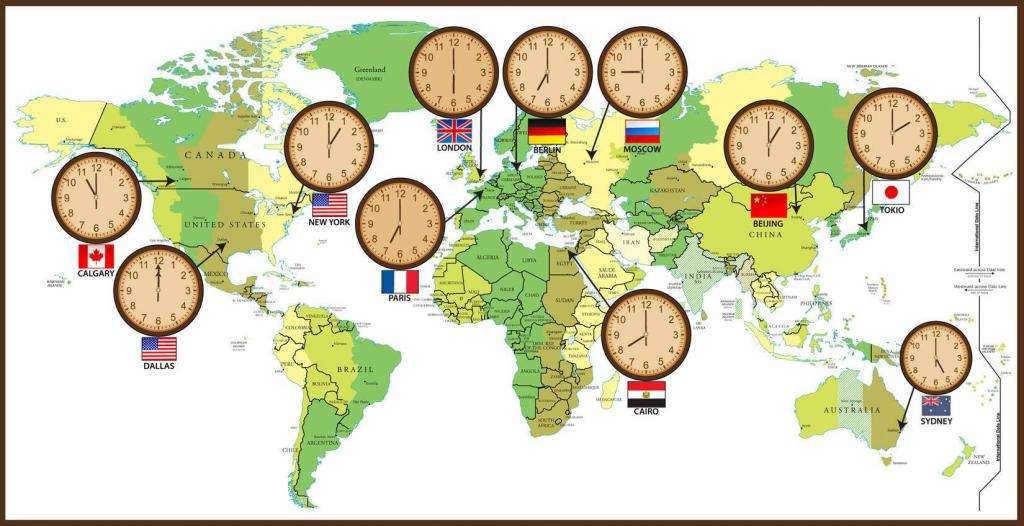
The typical measurement of a time zone is 15 degrees of latitude, however, certain time zones have been found to be wider and larger, while others are narrower. As a result, the time indicated by clocks often does not accurately reflect the true solar time, and in certain instances, the difference can exceed one hour?
What does true solar time mean?

The moment when the sundial in a specific area indicates the true noon is known as the local apparent solar time. The local apparent solar time varies throughout the year based on the true solar time and can differ from the standard 12.00 noon by up to 15 minutes. It is important to note that the sun reaches its highest point in the sky at exactly 12.00 hours only on the central meridian of each time zone.
Time determination systems based on the sun
Mean solar time is determined by calculating the average noon time in a specific location, without considering any yearly time variations.
Universal solar time is based on the main time meridian, which is Greenwich Mean Time.
Belt solar time is a uniform time system used for locations that fall within a 15-degree latitude interval. This corresponds to the geographic (not political) time zones.
All these solar time systems are crucial for astronomical observations.
Lunar Time
For certain cultures, lunar time holds even greater significance than solar time. This is because the Moon governs water, and all tides are intricately synchronized with its rhythms. Likewise, the celestial body at night also influences the fluids within the human body, impacting well-being and emotional state. Even plants have not escaped the influence of our natural companion, as they too have sap flowing within them. Throughout history, a lunar calendar detailing the phases and days has been developed, primarily utilized for agricultural purposes.

The lunar cycle is comprised of 29 days and is divided into 4 phases.
- The first phase: from the new moon to the first semicircle.
- The second phase: from the first semicircle to the full moon.
- The third phase: from the full moon to the semicircle on the opposite side.
- The fourth phase: from the semicircle to the new moon.
Furthermore, there is the concept of lunar days, which consists of twenty-four hours. They are counted using different systems. In one system, they are counted from the moment of the new moon, adding a 24-hour interval to it. In another system, the day is counted from one sunrise of the moon to the next. The interval between them is longer than that for solar days, ranging from 24.5 to 25 hours.
The knowledge about this phenomenon dates back to the early 20th century. It was initially implemented in Europe and later adopted by various countries, including Russia. The clocks would be set forward by an hour in the spring and back in the fall, with the intention of maximizing daylight usage. However, as time passed, doubts arose regarding the effectiveness of this practice, as well as its negative impact on our well-being. Not only does it disrupt our internal rhythms, but it also causes unnecessary stress. In recent years, an increasing number of individuals have started to question the significance of seasonal clock changes, advocating for stability instead. Perhaps they are onto something, considering that the distortion of solar time is even more pronounced in these cases.
Harmonious Coexistence of the Sun and Moon
In many nations, the passage of time forms a cohesive framework for living in sync with the natural world. As previously stated, the solar cycle governs the rhythm of the seasons, while the lunar cycle influences daily and domestic activities. It is worth noting that the Orthodox tradition also incorporates the lunar calendar to determine the date of Easter, a significant religious celebration.
There are distinct effects on us from solar and lunar time. Research has shown that aligning our lives with the rhythms of these celestial bodies can be highly beneficial. It promotes discipline, consistency, and emotional stability. This is particularly important for children, as their developing bodies are more vulnerable to stressors that can weaken their still-forming immune systems. Prioritizing a regular sleep schedule is especially crucial, as chronic sleep deprivation has become all too common and is a troubling trend. Quality sleep has the potential to alleviate numerous ailments and improve overall health.
The lunar cycle plays a significant role in our emotional well-being, while the sun also has its own impact on us.
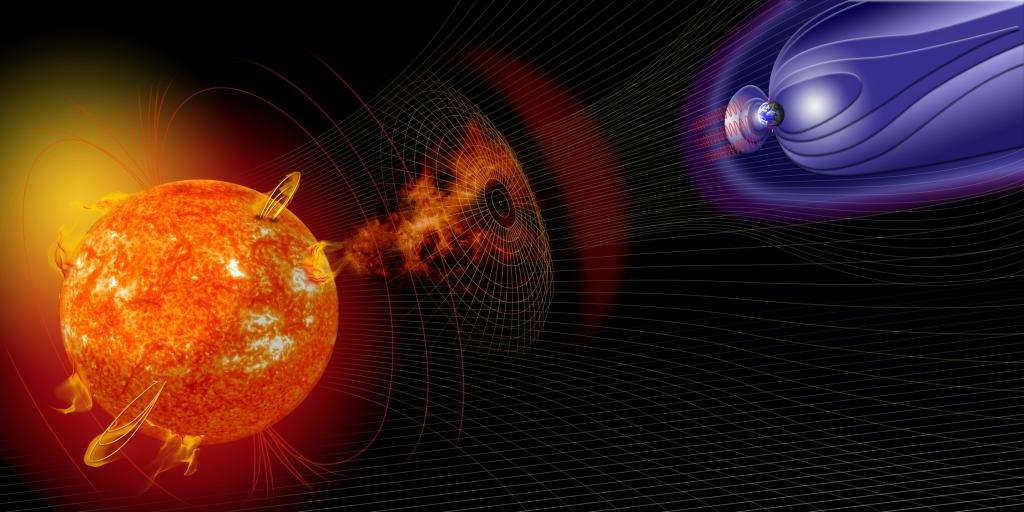
Occasionally, the sun exhibits activity, which involves the release of intense plasma that interacts with Earth’s magnetosphere. During these instances, some individuals may experience a decline in well-being. Online resources provide real-time information on solar activity, enabling individuals to anticipate and prepare for its surges.
The sun is our home star, which continues to conceal numerous enigmas, yet it is the one that possesses the capability to invigorate and motivate. Solar time is a remarkable system that aids in establishing a more systematic and orderly human existence.
Local time and solar time are two methods of comprehending time. Solar time was the conventional approach to determining time, while local time emerged later when the boundaries of a nation became significant.
Important points
- Local time is determined by the time zone of a specific area or country.
- Solar time is determined by the sun’s position in the sky and varies according to longitude.
- Daylight saving time can be applied to local time, but not to solar time.
Difference between Local time and Solar time
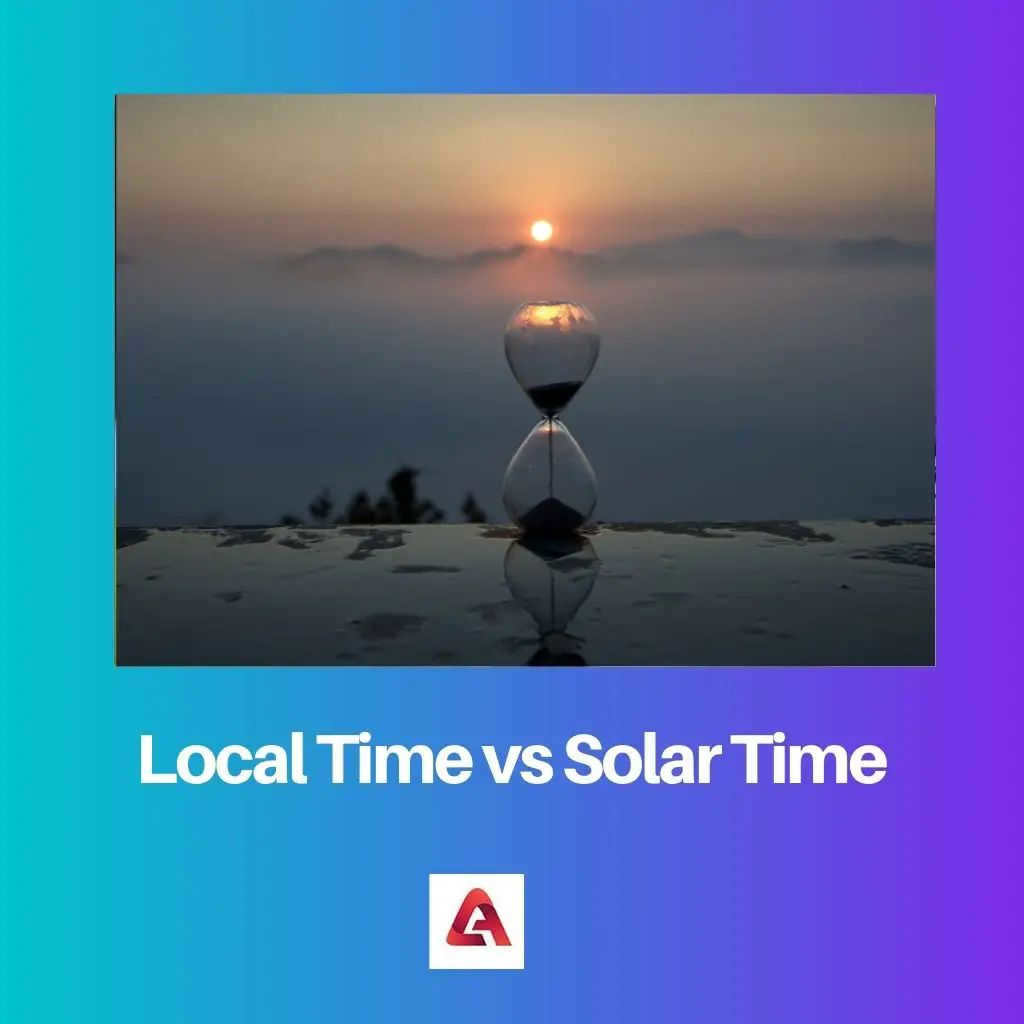
Local time and solar time differ in their reliability. Local time remains constant at a specific location, making it a more dependable measurement. On the other hand, solar time can vary, depending on the location and time of year.
Local time is determined by the geographical position of an area and changes as one moves from place to place. It serves as a standardized way of measuring time. In contrast, solar time is a local method that relies on the position of the sun.
Solar time is influenced by the Earth’s rotation and the changing seasons. This means that the exact time can vary depending on the time of year. For example, summer days are longer, while winter days are shorter.
Comparison table
What is local time?
Local time was implemented on November 18, 1883 on railroads in Canada and the United States. Sir Sandford Fleming proposed this system of measuring time.
Prior to this, time measurement was based on more natural methods such as solar time, which caused a lot of confusion. It was developed based on solar time to overcome the discrepancies caused by later time measurement.
Local time became necessary to ensure accuracy and facilitate comparison between different locations. It is influenced by only one factor – location.
It was introduced to ensure the smooth operation of railroads and weather forecasting. The local time of each area is known as the time zone.
There are more than 24 time zones on the planet. Sir Fleming recommended having 24 time zones based on a one-hour difference.
Time zones can be either ahead or behind Coordinated Universal Time (UTC).
UTC serves as a standard time and is not considered a time zone. Instead, it serves as a reference point for measuring time variations in different locations. The standard time used globally is GMT, which stands for Greenwich Mean Time.

What Does Solar Time Mean?
Solar time is a way to measure time based on the position of the sun. These timekeeping devices were known as sundials.
It was already understood that day and night varied across the globe due to the Earth’s rotation, which solar time couldn’t account for.
Solar time relied on the subjective observations of individuals in measuring time. A pole would be planted in the ground, and time would be determined by the shadow it cast.
This method of time measurement was ineffective during nighttime hours.
Water clocks, or klepsydras, were utilized to measure solar time. The name “water clock” comes from the fact that it used water as a means of keeping time. Throughout the year, there were variations in solar time measurements due to longer days in summer and shorter days in winter.
This puzzled me and seemed to be more of a regional approach to timekeeping. The utilization of solar time was done away with due to improved global communication and the necessity for a more uniform way of indicating the time.

Main distinctions between local time and solar time
- Both local time and solar time are dependent on location, however solar time is also influenced by the season, resulting in measurement inaccuracies.
- Local time enables easier comparisons, while solar time does not.
- Local time is a more reliable method of time measurement due to its accuracy, whereas solar time results in variations in measurements due to changing days.
- Local time was introduced at a much later stage, with solar time being commonly relied upon before its introduction.
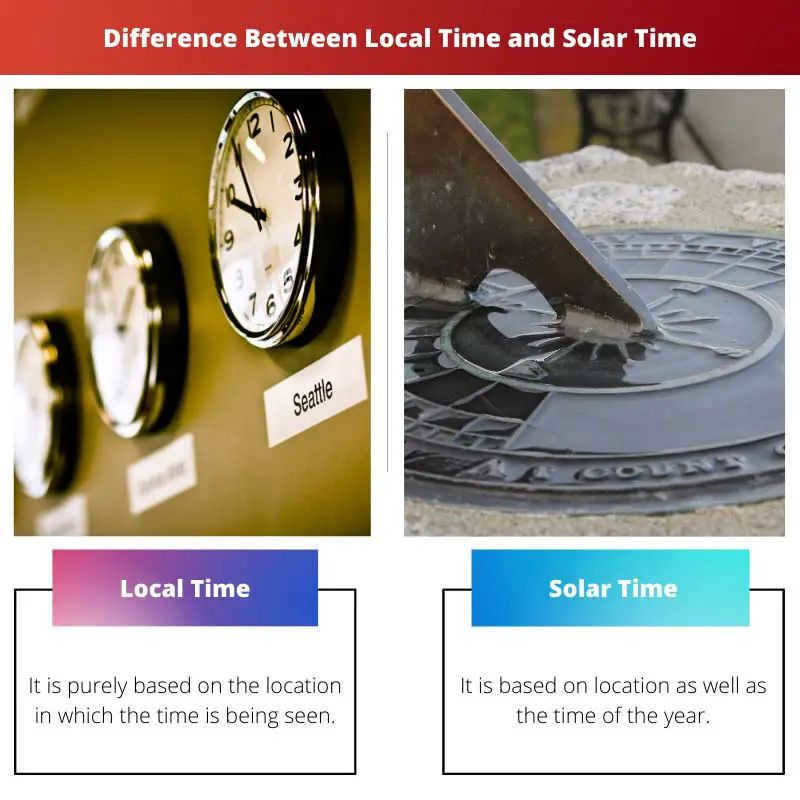
It would mean a lot to me if you could help spread the word about this blog post by sharing it on social media or with your friends and family. Sharing ♥️
Piyush Yadav has dedicated the past 25 years to his work as a physicist within the local community. He is deeply passionate about making science more accessible to our readers. Piyush holds a Bachelor of Science degree and a Graduate Diploma in Environmental Science. For more information about him, please visit his bio page.

The Sun is not just the primary source of life, but it also governs energy, facilitating its proper and efficient utilization. This characteristic of our central star has been acknowledged by humanity for countless centuries.

Living in harmony with the sun involves maintaining a balanced connection with the natural world. In our modern society, not many individuals reflect on the significance of this matter. However, this article provides an opportunity to delve into the subject from both an astronomical and emotional perspective.
Time based on the position of the sun

Many centuries ago, individuals were not able to travel frequently and often resided in one location for their entire lives, maintaining a consistent energetic aura. As a result, their bodies were not subjected to the stress of changing time zones. From birth until death, they only experienced the annual solar cycle of their birthplace. Extensive research has shown that aligning one’s activities with the rhythms of the sun has a positive impact on productivity and overall wellness. In previous centuries, each community operated on its own unique schedule, with local solar time being the most accurate.
Solar power, humankind, and the changing seasons
It is advisable to recall the way rural dwellers used to lead their lives.
During the springtime, there is an upsurge in human activity. The sun remains above the horizon for increasingly longer periods. It is during this time that field work commences, and animals and birds, having been confined to their enclosures during the winter months, begin spending more and more time in the wild. Moreover, people intensify their efforts to enhance their homes and gardens. In the summer, energy levels peak, with individuals not only working diligently but also actively engaging in recreational activities.
As autumn arrived, preparations for the season of minimal solar activity began. The harvesting of fruits, berries, and grain was completed, and provisions were made for the long, cold winter ahead. During the snowy and cold period, both people and celestial bodies became less active. Most individuals preferred to spend their time in the comfort of their homes, near the warmth of the traditional Russian stove. Occasionally, this calmness was interrupted by winter pastimes like sledding and snowball fights. And so, the cycle continued. It is worth mentioning that the daily routine of humans during this time aligned perfectly with the solar cycle: we rested when darkness fell, and awoke with the dawning of the sun.
Over time, scientific and technological advancements have created a disconnect between humans and the natural cycles of the sun and stars. Nowadays, everything seems to be in a constant state of chaos, with modes and rhythms shifting, and life moving at an accelerated pace. The way we perceive and interact with the solar cycle has become more flexible. While the introduction of technological innovations has simplified our lives, it has also made us less physically active and more mentally stimulated. The rapid development of cities and megacities has turned our lives into a never-ending race. The concept of “sun time” has gradually lost its importance over the years.

Nevertheless, the field of genetics remains unchanged, and the weariness from this kind of lifestyle motivates individuals to spend as much time as possible in natural surroundings, such as forests and bodies of water. This is because reconnecting with nature can replenish the energy that is depleted in the constant hustle and bustle. Additionally, adhering to a daily routine that aligns with the sun’s cycle can contribute to a more stable and harmonious mood.
Time zones do not always match real time
As trade and transportation systems developed, regions and even entire countries started to be grouped into time zones, where the clocks are set to the same time regardless of the local time. While this arrangement may be convenient in some ways, it is important to note that time zones are not always evenly distributed.
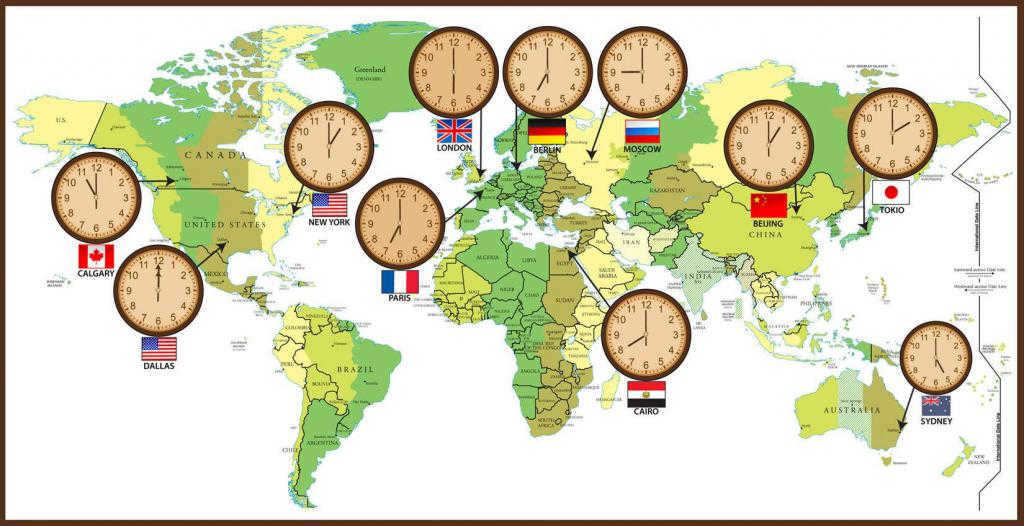
Time zones are typically defined as 15 degrees of latitude, although there are variations in their widths. As a result, the time displayed on clocks does not always correspond to the actual natural time, sometimes leading to a discrepancy of more than one hour.

The moment when the sundial in a specific location shows the true noon is considered as local noon. Local noon is determined by the true solar time and it varies throughout the year, sometimes deviating up to 15 minutes from the average position of 12.00 noon. It is important to note that the sun reaches its zenith at exactly 12.00 hours only on the central meridian of each time zone.
Time determination systems based on the sun
Average time. This system is calculated based on the typical noon time in a specific location, without considering yearly time variations.
Standard time. This is the time set by the prime meridian – Greenwich Mean Time.
Time zones. Standardized time used for locations that fall within a 15-degree latitude interval. This corresponds to the geographic (not political) time zone.
All solar time systems are crucial for astronomical observations.
Lunar timing
For certain individuals, lunar timing holds even greater significance than solar timing. This is because the Moon governs water, and all tides are completely synchronized with its cycles. Likewise, the celestial body of the night also influences the fluids within the human body, impacting well-being and emotional state. Additionally, plants have not been exempt from the influence of our natural companion, as they all contain sap. Throughout the extensive history of observation, a lunar calendar detailing the various lunar days and phases has been developed. It is commonly employed for agricultural tasks.

The lunar cycle is composed of 29 days and is divided into four phases.
- The first phase: from the time of the new moon to the first quarter moon.
- The second phase: from the first quarter moon to the full moon.
- The third phase: from the full moon to the third quarter moon.
- The fourth phase: from the third quarter moon to the new moon.
Additionally, there is a concept known as lunar days, which consist of twenty-four hours each. They are counted using different systems. In one system, lunar days are counted from the time of the new moon, adding an interval of 24 hours each. In another system, lunar days are counted from one sunrise of the moon to the next. The interval between these sunrises is longer than that of solar days, ranging from 24.5 to 25 hours.
Translation of clocks according to seasons
Knowledge of seasonal clock translation dates back to the beginning of the previous century. Initially introduced in Europe, this concept was later adopted by countries worldwide, including Russia. The clock hands would move forward by one hour in spring, and then back in fall. The rationale behind this practice was to make better use of daylight hours. However, over time, doubts arose regarding the effectiveness of this belief, as well as the toll it took on the body. Not only did the sudden change disrupt people’s routines, but it also caused them to live out of sync with the solar cycle. In recent years, many individuals have started questioning the significance of seasonal clock changes, advocating for stability instead. Perhaps they have a point, considering that in some cases, solar time becomes even more distorted as a result.
Harmonious Coexistence of the Two Celestial Bodies
In numerous nations, the passage of time constitutes a cohesive framework for harmonizing with the natural world. As previously mentioned, the solar cycle governs the ebb and flow of the seasons, while the lunar cycle regulates the daily and domestic rhythms. It is worth noting that the Orthodox tradition also incorporates the lunar calendar for determining the date of Easter, a momentous celebration.
Solar and lunar time have different effects on us. Research has shown that following the rhythms of these celestial bodies can be highly beneficial. It promotes discipline, consistency, and emotional stability. This is particularly important for children, as their bodies are more susceptible to stressors that can weaken their developing immune systems. Maintaining a regular sleep schedule is especially crucial, as chronic sleep deprivation has become increasingly common and is a concerning trend. Adequate sleep has the ability to improve many health conditions.
The lunar cycle influences our emotional well-being, while the sun also has an impact on individuals.
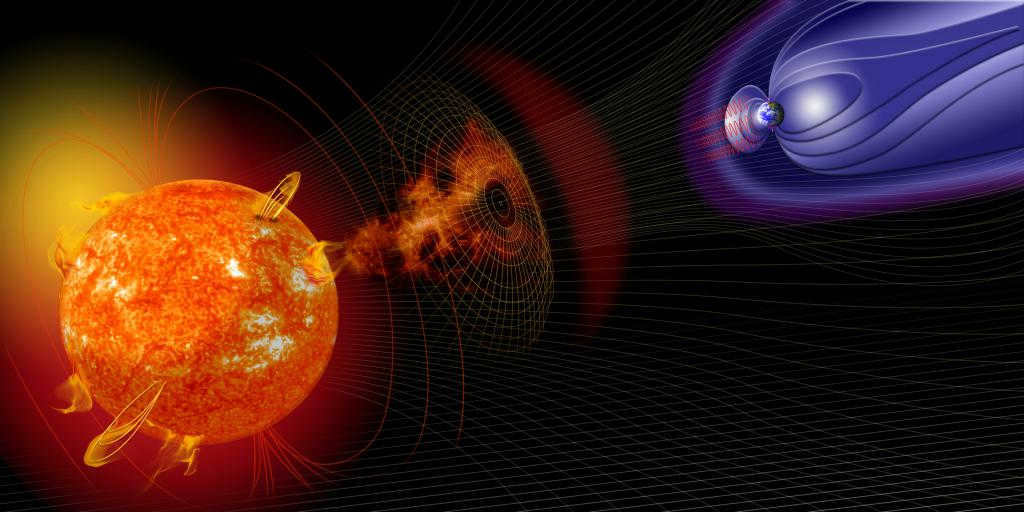
Occasionally, there is activity occurring on the sun, during which powerful plasma emissions occur that impact the magnetosphere of our planet. This can result in many individuals feeling unwell. Fortunately, one can now monitor the level of solar activity in real-time on the internet and prepare in advance for any significant outbursts.
Summary
The sun is our very own star, which still harbors numerous enigmas, yet possesses the remarkable ability to invigorate and motivate. Solar time is a fascinating system that aids in bringing structure and organization to human life.
Throughout the course of human history, time has held great importance. It serves as a measure for the duration of any action and, in essence, is the measure of life itself. Just imagine if time did not exist, how would we define everything that surrounds us?
Julian days
Astronomers have embraced a specific sequential numbering system for days. Within this system, there is a recurring 28-year cycle where all days and weeks are repeated.
This measurement method was devised by John Herschel in 1849. The time count commenced at noon on April 1st, 4713 BC, and it was Joseph Scaliger who suggested its adoption. Interestingly, he named it Julian, as a tribute to Julius’ father.
Stellar Time
Stellar time can be defined as the hour angle of the vernal equinox, and sidereal time is measured from this point.
A sidereal day is the time between two consecutive peaks.
The duration of a sidereal day is based on the Earth’s rotation on its axis, and is divided into hours, minutes, and seconds. One year contains one additional sidereal day compared to the average solar year.
It is important to note that a sidereal day is shorter than an average solar day by 3 minutes and 56 seconds. However, the time it takes for the Earth to complete one revolution to the vernal equinox remains constant, resulting in a consistent duration for a day.
Time measurement by the Sun
Sidereal time is widely used in astronomy, but it is not practical for everyday life. As a result, solar time was introduced to cater to human needs.
Solar time is determined by the variation in the Sun’s hour angle. This method of time calculation is based on the time interval between two successive culminations of the Sun, whether they are upper or lower. This distinction helps to determine whether it is noon or midnight.
Solar time is determined by which Sun it is based on.
The true solar day is the duration of the Earth’s revolution relative to the Sun.
The start of this day is considered to be true midnight, which is the period when the Sun is at its lowest point.
SOLAR TIME (true time) is a method of calculating time based on the interval between consecutive passages of the Sun through the observer’s meridian (solar day). The duration of solar days varies throughout the year due to changes in the Earth’s orbital velocity and the apparent position of the Sun in the sky as the Earth orbits. Therefore, an average solar day was adopted, which serves as the basis for determining average solar time. Solar mean time is measured at the Greenwich Meridian, hence it is referred to as Greenwich Mean Time or world time.
Scientific and Technical Encyclopedic Dictionary.
Explore the definition of “SOLAR TIME” in other dictionaries:
SOLAR TIME refers to the time calculated based on the variation in the hour angle of the Sun. The concept of solar time can be further divided into true solar time and mean solar time, depending on whether the true or mean position of the Sun is used for timekeeping… Big Encyclopedic Dictionary
SOLAR TIME is the time calculated based on the change in the hour angle of the Sun. There is a distinction between true solar time and mean solar time, depending on whether the true or mean position of the Sun is used for time calculation… Natural History Encyclopedic Dictionary
Solar time is the time calculated based on the variation in the hour angle of the Sun. It can be further categorized into true solar time and mean solar time… Astronomical Dictionary
Solar time is a method of measuring time based on the interval between two consecutive upper or lower culminations of the Sun, known as true noon and true midnight. This system is also referred to as true solar time. In contrast, mean solar time is determined by the change in the hour angle of the Sun. The distinction between true solar time and mean solar time depends on which Sun is used for timekeeping. Solar time is an astronomical time system that relies on the solar day, which is the time between two successive culminations of the Sun at the tropics. This concept is found in various dictionaries and encyclopedias, such as the Geography Dictionary and the Encyclopedic Dictionary.
In Lithuanian, solar time is known as “saulinis laikas” and is defined as an astronomical time based on the solar day, which is the interval between two consecutive culminations of the Sun at the tropics. This definition can be found in the Penkiakalbis aiškinamasis metrologijos terminų žodynas.
Solar time – Solar time is the time measured by the position of the Sun. True solar time is equal to the hour angle of the Sun’s center and the sum of 12 hours. Mean solar time is equal to… … Sport Glossary
Solar time – … Wikipedia
Local solar time – may refer to: local true solar time, determined at the observer’s location by the apparent position of the sun on the celestial sphere. For example, true noon at some point on Earth occurs at the moment of the Sun’s upper culmination (the moment … Wikipedia
Astronomy refers to true solar time as local solar time and it is related to the Earth’s objective position in the solar system. The position of the sun determines true time. For instance, the sun always crosses the meridian during true noon. This information can be found on Wikipedia.
Time has always been significant throughout human history. It holds an important and fascinating role in various fields, including astronomy. In a sense, time represents the duration of any event and serves as a measure of life itself. Just imagine how challenging it would be to define everything around us if time didn’t exist.
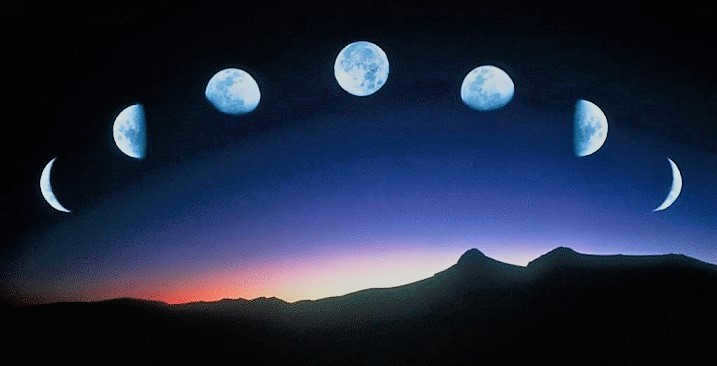
Julian days
Astronomers have embraced a specific sequential numbering system for days. Within this system, there is a 28-year cycle in which all days and weeks are repeated.
This method of measuring time was devised by John Herschel in 1849. Time counting began at noon on April 1st, 4713 BC, and was proposed for use by Joseph Scaliger. Interestingly, Scaliger named it Julian, in honor of Julius’ father.
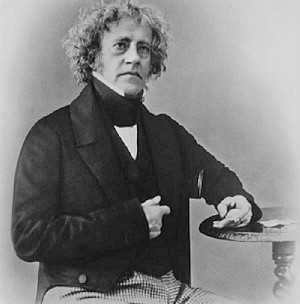
Astronomical Definition of Universal Time.
A sidereal day corresponds to the interval between two consecutive crests.
In the field of astronomy, this time can be described as the angular distance of the vernal equinox point. Furthermore, stellar time is measured from this reference point.
A sidereal day represents the duration of the Earth’s rotation on its axis. It is divided into hours, minutes, and seconds. A year consists of one additional stellar day compared to an average solar day.
As demonstrated, the sidereal day is shorter than the average solar day. The established difference is 3 minutes and 56 seconds.
In addition, the time taken by the Earth to complete one revolution to the vernal equinox point remains constant. Hence, the duration of a day remains the same.
Solar time in astronomy
Astronomy employs sidereal time for convenience, but it is not applicable to everyday human life. As a result, the concept of solar time was introduced.
This measure of time is determined by the shift in the Sun’s hour angle.
This method of time calculation is based on the duration between two successive culminations of the Sun. Additionally, the type of culmination, whether upper or lower, plays a significant role in determining whether it is noon or midnight.
The concept of solar time in astronomy
In astronomy, solar time can be classified as either true or average, depending on the specific Sun it is determined by.
True solar time refers to the duration of the Earth’s rotation in relation to the Sun. This type of time measurement begins at true midnight, which corresponds to the moment when the Sun reaches its lowest point in the sky.
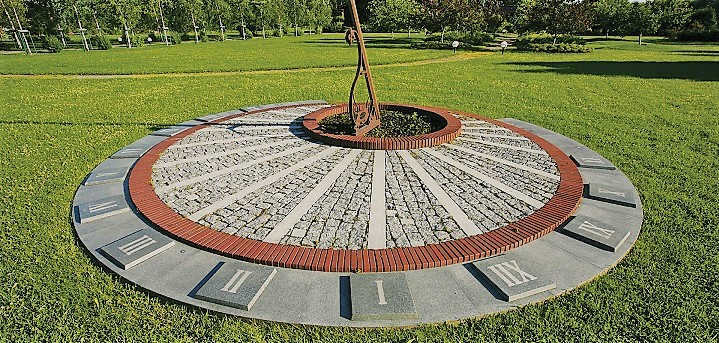
The motion of the Sun is not constant. Consequently, the duration of a solar day on December 22 is longer than on September 23 by almost one minute. However, this imprecision poses an inconvenience for calculations.
In our daily lives, a day consists of 24 hours. Generally, measurements are made in seconds. Moreover, individuals distinguish between morning, day, evening, and night to determine the time. This primarily depends on the Sun’s position relative to a specific meridian.
Nonetheless, the mean solar day is utilized to precisely ascertain the time.
It represents the duration between two successive culminations of the average equatorial Sun on the same meridian. It is more accurate to state that the mean solar day corresponds to the average of the true solar day.
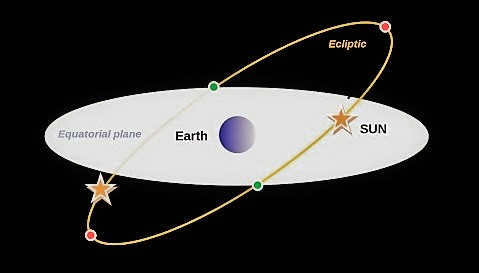
Time zones
Generally, time zones are primarily used in geography.
From our basic understanding in school, we are aware that the Earth is divided into meridians. There are a total of 24 meridians, each separated by 15 degrees of longitude.
It is commonly agreed upon that the initial meridian, with zero longitude, is known as the prime meridian or the world meridian.
Meridians run from west to east.
The time in neighboring zones differs by one hour. To determine the time in a specific zone, you need to know its corresponding zone number.
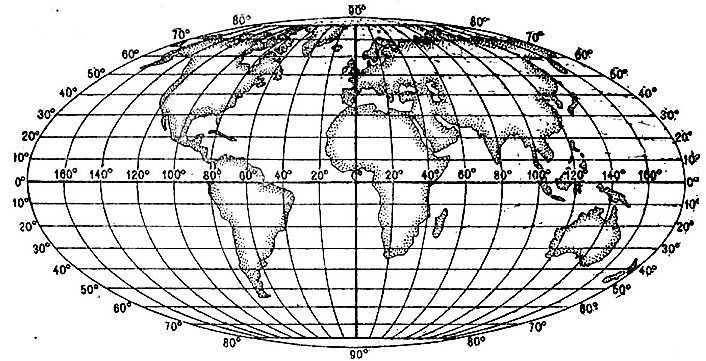
Actually, the term “zone time” refers to the time of a specific time zone. It is widely accepted that a day consists of 24 hours and starts at midnight.
Worldwide time
For instance, Russia is divided into 9 different time zones. In 1930, the concept of standard time was introduced, and an additional hour was added to each time zone.
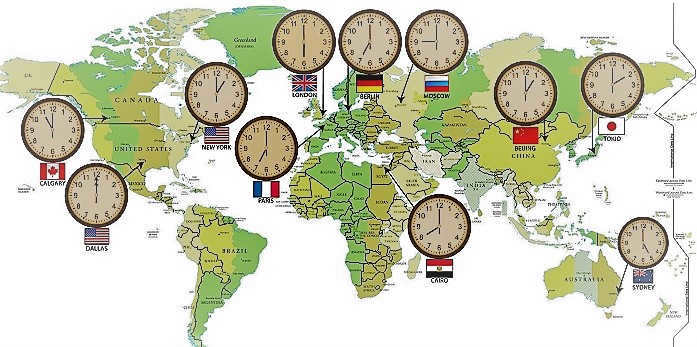
The term universal time is also known as Moscow time.
This particular interpretation of time entails the utilization of the time within the adjacent region. Put simply, universal time is the time of the specific time zone plus an additional hour.
According to the latest concepts, this is referred to as local time.
Ephemeris Time: A Unique and Constant Time Scale
Ephemeris time is a time scale that serves as the basis for defining seconds. Unlike other time scales, it is not affected by the Earth’s rotation speed. Introduced by J. M. Clemens in 1952, ephemeris time has become a fundamental unit of time.
One of the key advantages of ephemeris time is its constancy, which greatly simplifies calculations. By eliminating the need to account for Earth’s rotation variations, it provides a consistent and reliable reference for time measurement.
Time, in all its essence, reflects the duration of events. It is a uniquely defined and valued concept, shaping our understanding of the world. Furthermore, there are countless methods available for calculating and interpreting time.

Undoubtedly, time holds great significance for an individual, serving as a vital component of their existence.
In the future, time will unveil what lies ahead.
Time represents an inherent attribute of our universe, essential for delineating the sequence and duration of diverse phenomena.

The ancient Greek city of Thorikos had a stele that depicted a calendar of festivals and sacrifices. This stele, which dates back to 440-430 BC, provides valuable insights into the religious practices of that time.
One of the main characteristics of time is its continuous and relentless flow. Whether you’re an astronomer, physicist, or any other specialist, marking the precise moments of observation is crucial. Without accurate time measurements, any astronomical observation, such as a drawing, photograph, or recording, loses its scientific value. On the other hand, advancements in time measurement have often led to new discoveries in the study of natural phenomena.
Time is a one-way street, meaning that once a move is made, it cannot be undone. It is impossible to reverse the cause and effect relationship. If the Earth were not subject to any external forces, it would continue to rotate indefinitely, and time in the Universe would become reversible. However, in order for this to happen, the Universe would need to be reduced to nothing but a rotating globe.


Sidereal and solar days
A sidereal day is slightly shorter than a solar day because the Earth rotates on its axis and revolves around the Sun simultaneously.
If you want to determine the length of the Earth’s revolution on your own, you can create a sighting device by hammering two nails into a board and placing it on a tripod. Then, align the sighting device as accurately as possible with a star, record the starting time of your observation, and leave the device fixed in place for a full day. Alternatively, you can use a telescope or telescope tube securely fastened to achieve the same result. After 23 hours and 56 minutes (the duration of a full Earth revolution), the Earth will have completed one revolution and the telescope will be once again pointing at the same star.

There is a 4-minute difference between the stellar and solar revolutions of the Earth in a day, a 120-minute difference in a month, and a 24-hour difference in a year. Similarly, the clocks that measure sidereal and solar time also differ. In a year, there is one extra stellar day compared to a solar day. And once a year, during the fall equinox, sidereal time aligns with solar time.

The Prague chimes, also known as the eagle chimes, are the world’s oldest astronomical clock that is still in operation. It displays various types of time, including Old Bohemian, Babylonian, Central European, and sidereal time. Additionally, it shows the time of sunrise and sunset, as well as the positions of the Sun and Moon within the constellations of the zodiacal circle. Furthermore, it also indicates the phases of the Moon.
Human beings are governed by the cycle of day and night, which is determined by the 24-hour solar clock. However, in every observatory, there is a clock that operates on star time, which is four minutes ahead each day. These star clocks are essential for organizing observations. The star chart displays the hours and minutes along its bottom edge, indicating the celestial bodies’ right ascension. For example, Sirius has a right ascension of 6 hours and 45 minutes. This means that at the specified time according to the sidereal clock, Sirius will be directly south, on the meridian, on any day of the year. By consulting the star clock and the star chart, one can easily determine which stars are currently suitable for observation.
Looking for a trustworthy timepiece
Just a quarter century after the invention of the pendulum clock, a clock mechanism of such remarkable precision was developed that it found widespread use in observatories for conducting observations.

An astronomical clock that was created by the inaugural Royal Astronomer, John Flemsteed, for the recently established Greenwich Observatory. These clocks were constructed by the renowned clockmaker Thomas Tompion and were able to measure astronomical time in degrees, minutes, and seconds of arc. For instance, 24 hours equaled 360 degrees, 1 hour equaled 15 degrees, 4 minutes equaled 1 degree, 4 seconds equaled 1 minute, and 1 second equaled 15 seconds of arc. Additionally, the clock was equipped with a pendulum to display the customary time as well.
Every mechanical clock, even if it is perfectly calibrated, is bound to either speed up or slow down. Furthermore, all clocks operate irregularly: sometimes running faster, sometimes running slower, depending on movement, shaking, temperature, air pressure, dirt, and the age of the mechanism, among other factors. Therefore, it is advisable to regularly check your timepiece, ideally once a day at the same time. In the past, astronomers used to accomplish this by observing the stars and then converting star time into mean solar time, which is used as the standard for setting clocks. Nowadays, they utilize special time signals that are more accurate than the audio signals on the radio or the clock displayed on a TV screen: astronomers require precision to the thousandth of a second. For most observations, amateur astronomers typically need an accuracy of about 1 second.
The most recent improved pendulum was Fedchenko’s clock, which was developed in 1954. Its precision was 3 ⋅ 10-4 seconds. Unfortunately, Fedchenko’s clock was introduced too late as the mechanical pendulum had already been removed from clocks in 1939. From that point onwards, observatories began to utilize quartz clocks. In these clocks, the quartz plate, which is cut from a single crystal, serves as the regulator of the stroke, replacing the role of the pendulum. When an electric current is applied to the quartz plate, it starts to oscillate at a specific frequency. A high-quality watch controlled by a quartz plate has a variation of 10-4-10-6 s per day. However, there is a drawback to quartz clocks, which have improved the accuracy of astronomical measurements by 100 times. Over time, the quartz plate ages, resulting in a gradual slowing down of the clock by approximately 10-6 s per day.

Other types of pendulum atoms, such as hydrogen and rubidium, have been invented and tested, but caesium atomic clocks remain the primary ones.
Understanding how atomic clocks work is easier than delving into their inner workings. These modern, ultra-precise clocks are intricate electronic devices. Astronomers must possess the competence to effectively utilize them in observations of both celestial bodies and our planet Earth.

Current local time
The local time is determined by the relative position of the North Star and the Big Dipper, while the solar time is measured using a sundial. However, a sundial often displays a slightly different time than the one we typically use in our daily lives.
If the Earth were a perfectly rotating sphere that also revolved uniformly around the Sun in a circular orbit, and if the Earth’s axis were perpendicular to the plane of its orbit, then both the position of the Sun in the sky and the length of the day would be consistent. However, the Earth’s movement along an elliptical orbit and its axial tilt in relation to the equator result in varying day lengths.

In the Bering Strait, there are two islands known as Rothman Island and Krusenstern Island. Rothman Island is the easternmost point of Russia, while Krusenstern Island belongs to the United States. These islands are separated by the state border and the international date line. On Rothman Island, the local time is 13 hours ahead of the world time, whereas on Krusenstern Island, it is 11 hours behind. Despite this time difference, both islands are situated in the same time zone, and the date difference is always exactly one day. At midnight, the date changes on both islands, but Rothman Island remains one day ahead of Krusenstern Island.

If you travel westward, towards the Sun, the traveler’s time gradually increases, and if you travel eastward, following the Sun, the actual solar time slows down. Hence, for a traveler circling the globe, there needs to be a boundary somewhere that allows the traveler to enter a new date and day of the week. This boundary was established in the 19th century. The International Date Line stretches through the Bering Strait between the Pacific Ocean islands, extending from pole to pole.
Calendar
The primary objective of the calendar is to provide a straightforward method for linking events to a sequence of days and accurately capturing the start of the year within the same season. If the calendar year consistently consisted of 365 days, its commencement would always precede the start of the actual year by 5 hours and 48 minutes, causing the New Year’s Day to cycle through all four seasons over a span of approximately 1508 years. However, employing such a year, as was done in Egypt, would compromise the convenience of the calendar. Hence, the calendar incorporates a rotation between years of 365 days and 366 (leap years).
Julius Caesar introduced the leap year system in the Roman calendar, where a leap year occurs every four years. The Persians, in the eleventh century, took a slightly different approach by having a leap year for four consecutive years, followed by skipping the eighth leap year and replacing it with the fifth year. The Gregorian calendar (New Style) uses a method that is somewhat less accurate compared to the Persians’, but it simplifies the translation of years and centuries into days, which is one of its main purposes. According to this method, every fourth year is a leap year, except at the end of each century, except for every fourth century. The average length of a Gregorian year is 365.242500 days, which is only 0.0002581 days (or 22 seconds) longer than the true year. However, by excluding one additional leap year every four thousand years, the length of the year becomes so close to the observed length that the difference can be considered negligible. It should also be noted that the length of the year is not exactly constant.
Refer to the discussion page for a rundown of tasks that need to be completed.
On a planet like Earth, which rotates in the same direction as it orbits the Sun, the length of a solar day is longer than a sidereal day. At time 1, the Sun and a distant star are aligned with a point on Earth (represented by the red dot). By moment 2, the planet has completed one full rotation on its axis (1 → 2 = one sidereal day). However, it takes a bit longer for the Sun to be opposite again at time 3 (1 → 3 = solar day).
We make a distinction between mean solar time and true solar time.
Average solar time is based on the concept of an imaginary sun moving at a constant speed along the equator throughout the year. This average speed corresponds to one full revolution every 24 hours.
Solar time is a time measurement that is calculated based on the movement of the sun throughout the day. At any given place and time, solar time can be determined by calculating the angle of the sun in relation to that location. This is why solar noon is defined as the moment when the sun reaches its highest point in the sky at a specific place on Earth, resulting in a hour angle of zero.
Summary
Duration of the Visible Solar Day
The true solar time is determined by the apparent solar days, which is the time between two consecutive returns of the Sun to the local meridian. This duration varies throughout the year due to two factors:
- The tilt of the Earth’s axis in relation to the ecliptic plane;
- The eccentricity of the Earth’s orbit and the variation in its speed (according to Kepler’s first and second laws). The Earth moves fastest when it is closest to the Sun on January 4th and slower when it is farthest away on July 4th.
The first factor results in shorter visible solar days in March or September compared to June or December.
The second factor causes the visible solar days to be longer in December-January and slightly shorter in June-July (refer to the table below).





